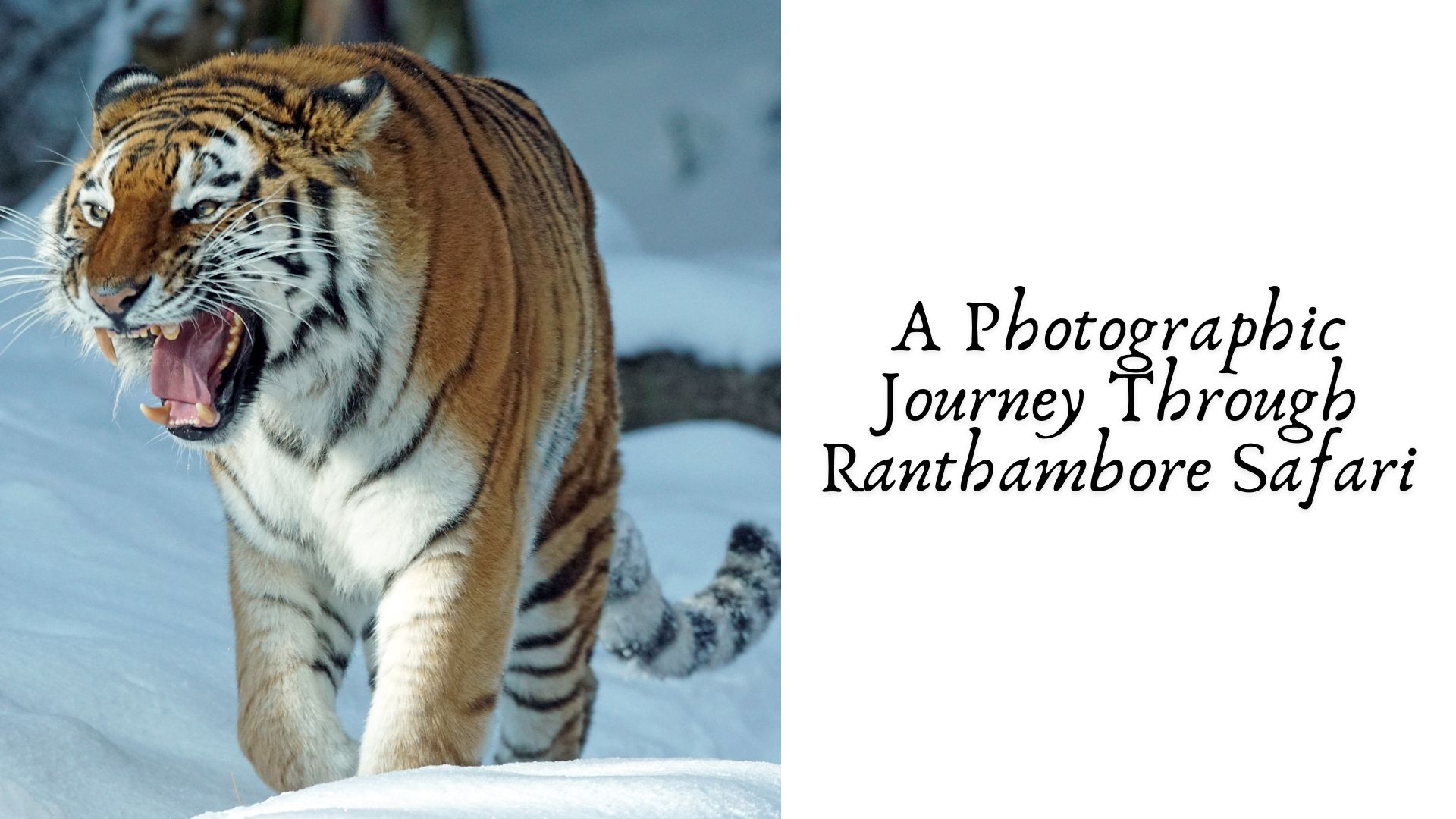Ranthambore Safari, nestled in the heart of Rajasthan, India, offers a mesmerizing blend of nature and wildlife, captured best through the lens of a camera. This majestic national park, known for its rich biodiversity and stunning landscapes, is a paradise for photographers. This article delves into the photographic journey through Ranthambore Safari, highlighting the key attractions, wildlife encounters, and the essence of this remarkable wilderness.
The Majestic Landscape of Ranthambore
The journey begins with the awe-inspiring landscapes that define Ranthambore National Park. Spread across 1,334 square kilometers, the park boasts a diverse topography ranging from dense forests and open grasslands to tranquil lakes and rugged hills. The interplay of light and shadow during sunrise and sunset creates an ethereal ambiance, perfect for capturing breathtaking photographs.
The park is divided into several zones, each offering unique photographic opportunities. Zone 1, known for its picturesque Rajbagh Talao, is a favorite among photographers. The serene waters of the lake reflect the surrounding forest and the ancient Rajbagh ruins, providing a perfect backdrop for wildlife photography.
Wildlife Encounters: The Big Cats of Ranthambore
Ranthambore is renowned for its tiger population, making it one of the best places in the world to photograph these magnificent big cats. The thrill of capturing a tiger in its natural habitat is unparalleled. Early morning and late afternoon safaris increase the chances of spotting these elusive creatures.
The legendary tigress Machli, also known as the “Queen of Ranthambore,” has been the subject of countless photographs. Her offspring continue to roam the park, ensuring that the legacy of the royal Bengal tiger lives on. Photographers often focus on the tigers’ behavior, capturing moments of play, hunting, and interactions with their cubs.
Avian Wonders: Bird Photography in Ranthambore
Beyond the tigers, Ranthambore is a haven for bird enthusiasts. The park is home to over 300 species of birds, making it a birdwatcher’s paradise. The tranquil lakes, marshes, and forests provide ample opportunities to photograph a variety of avian species.
Birds such as the Indian peafowl, crested serpent eagle, and the elusive painted spurfowl are commonly sighted. The vibrant plumage of these birds against the lush greenery creates visually stunning photographs. Patience and a keen eye are essential for capturing the perfect shot of these feathered wonders.
The Flora of Ranthambore: A Botanical Delight
The diverse flora of Ranthambore adds another dimension to the photographic journey. The park is adorned with a mix of deciduous forests, grasslands, and aquatic vegetation. The changing seasons bring about a transformation in the landscape, offering photographers a dynamic canvas.
The blooming of the dhok tree (Anogeissus pendula) during the monsoon season adds a splash of color to the park. The golden hues of the dry grasslands in summer provide a stark contrast to the lush greenery of the rainy season. Macro photography enthusiasts can focus on the intricate details of flowers, leaves, and insects, showcasing the smaller wonders of the park.
Capturing the Essence of Ranthambore
To truly capture the essence of Ranthambore, photographers must immerse themselves in the park’s rhythm. Patience, observation, and respect for the wildlife are crucial. Each safari offers a new story, a new frame, and a new adventure. The anticipation of what lies around the next corner keeps photographers on their toes.
Using a variety of lenses, from wide-angle to telephoto, allows photographers to experiment with different perspectives. Wide-angle shots can capture the grandeur of the landscape, while telephoto lenses bring distant subjects, such as tigers and birds, into sharp focus.
Practical Tips for Photographers
- Equipment: Carry a DSLR or mirrorless camera with multiple lenses, including a telephoto lens for wildlife and a wide-angle lens for landscapes. A sturdy tripod is essential for steady shots, especially in low light conditions.
- Settings: Use a fast shutter speed to freeze the motion of animals and birds. Adjust the ISO to maintain a balance between light and grain. Experiment with aperture settings to control the depth of field and create a bokeh effect.
- Timing: Early morning and late afternoon safaris offer the best lighting conditions and higher chances of wildlife sightings. The golden hour, just after sunrise and before sunset, provides soft, warm light that enhances the beauty of photographs.
- Guidance: Hiring a knowledgeable guide can significantly enhance the photographic experience. Guides are familiar with the park’s terrain and animal behavior, helping photographers find the best spots and moments to capture.
- Ethics: Always prioritize the well-being of the wildlife and the environment. Maintain a respectful distance from animals and avoid disturbing their natural behavior. Follow the park’s rules and regulations to ensure a sustainable and ethical photography practice.
Conclusion
A photographic journey through Ranthambore Safari is a visual feast, offering a myriad of opportunities to capture the raw beauty of nature and wildlife. The park’s diverse landscapes, rich biodiversity, and the thrill of encountering majestic tigers make it a dream destination for photographers. Each photograph tells a story, preserving the magic of Ranthambore for generations to come. Whether you are a seasoned photographer or an amateur with a passion for wildlife, Ranthambore Safari promises an unforgettable adventure through the lens.
Name: Eye of The Tiger
Address: Kolkata, West Bengal, India
P.No.: 7003976182
